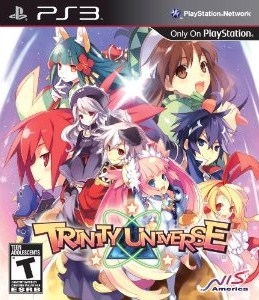
Trinity Universe - Review
by Karl Koebke , posted on 08 July 2010 / 7,209 ViewsSay what you will about NISA, but one thing I love about them is that they bring games over to the West that would be hard pressed to make it over here otherwise. Were it not for them then I would never have had the chance to play any crossover RPG (for better or for worse). Cross Edge was the first I had ever played and, honestly, it was really abysmal, but now Trinity Universe has come out and given crossover RPGs a slice of redemption, even if it’s still not quite up to the standard this generation has set for RPGs.
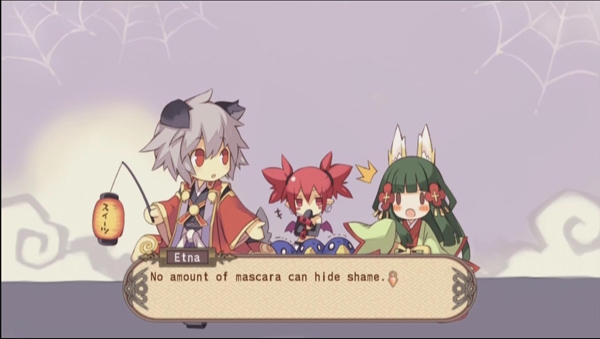
Trinity Universe has two separate main characters. The easier campaign revolves around Kanata the Demon Dog King who seeks adventure as he shirks his family’s responsibility to protect their land. His kingdom is the Netherverse, a strange land where objects are constantly coming into and out of orbit with the habitable town. Kanata’s destiny as a member of the royal family has always been to transform into a Demon God Gem in order to stop random debris from hitting his town, but he decides that this would suck and instead seeks adventure outside of the castle for the first time in his life.
Between the two stories in Trinity Universe, Kanata’s is definitely the better since it is almost constantly light hearted and filled with 4th wall breaking, thanks to the inclusion of Etna and Prinny from Disgaea “fame”. Even the twist at the end that attempted emotional poignancy quickly turned back into light hearted comedy. Not all of the comedy is gold mind you and some puns made me groan, but there were enough times where the game legitimately made me laugh to forgive the pitfalls for the most part.
The second main character is a Valkyrie named Rizelea who has arrived in the Netherverse by chance and decided to investigate the strange objects that are endangering the area. Eventually she teams up with Violet from Gust and Flonne from Disgaea (one of my favorite characters). This story is more serious and involves a lot of introspection on the part of Rizelea that doesn’t really fit with the mood of the game in general. Flonne provides for some hilarious moments, but these are usually in the parts of the story that both campaigns share and there wasn’t that much amusing dialogue that was unique to Rizelea’s story, so I definitely suggest going with Kanata’s story first.
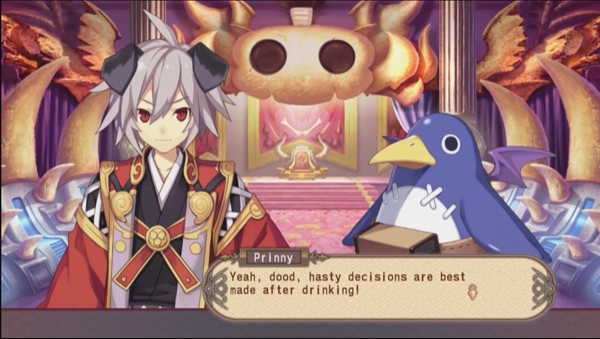
No matter which main character you choose, the bulk of your time will be spent exploring dungeons that are floating around the Netherverse. The search mechanic from Cross Edge is back but thankfully it is markedly improved. Instead of a small radar-like ability that forces you to slowly search again and again in a grid to find everything, whenever you search in Trinity Universe color coded lines will show you the general direction of all the hidden items in a dungeon and then you can decide which you want to go to. Sadly, all of these dungeons are corridor happy, and there are only a few visual themes that show up, so it feels less like exploring a brand new world and more like searching for valuables in a place you’ve already been.
Running through these dungeons you’ll often have to deal with random encounters, though there is a way around that for a while if you follow the red search line and beat up a few enemies in a row in a specific hunting ground. One sore point is that the battle system doesn’t foster a lot of variety. Each of the four characters in the team is given a certain amount of AP which all actions require. Even if you don’t use your AP for attacking it will slowly count down to zero, so you have to think fast. Square, X, and the Triangle button are all different types of attack and Circle can have an assigned ability, like healing or increasing your defense. You can perform special moves with different combinations of the three attack buttons, but this only gives a small boost and isn’t nearly as critical to success as it was in Cross Edge, so you aren’t forced to discover and remember incredibly long attack combinations with each character.
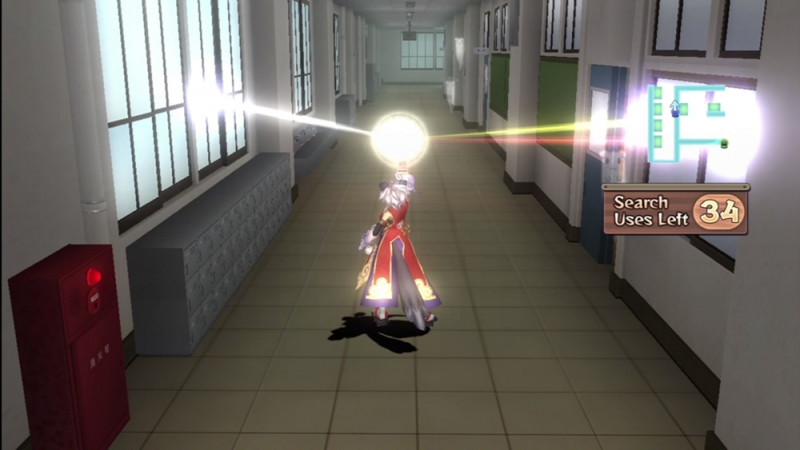
Success in the latter part of the game does however require that you learn how to use Fury Chains. If you press R1 before a character’s AP runs out then you’re presented with the remaining characters on each face button, along with a timer. Pressing a face button with one of the remaining characters on it will switch to that character immediately and the number of hits will transfer over. Get your hits counter up enough before pressing R1 and the timer will have a green section. Switching to the next character while in that green section will give the two characters a free special attack on the enemy. Do it again and you’ll have three characters, all attacking at once for even greater damage, and the ultimate goal is always to get the timing right three times and have all four characters bashing away at the enemy.
This system works well enough; although it kind of means that you’ll employ the same strategy for 99% of the fights in the game, unless the enemy is so weak that it isn’t required. My only issue with the Fury Chain system is that the position of the green part of the bar is random and sometimes it is right at the start of the timer and almost impossible to use correctly. This can be a killer when you’re depending on this strategy for a really tough boss fight (like I did during the final boss fight... *cries*).
One flaw in the gameplay I simply can’t forgive or begin to fathom is that every time you get a new character in your party they start at a ridiculously low level. Why would I ever change my party if my main characters are all level 70 and suddenly I get a new character that’s level 8? I know some people love grinding, but this decision makes no sense whatsoever. Giving me a new character and then making him a uselessly low level is like putting a cake on a pendulum; just as it starts to get into reach it swings back the other way and you smash my head in with a baseball bat while I’m distracted. That’s just cruel, dood.
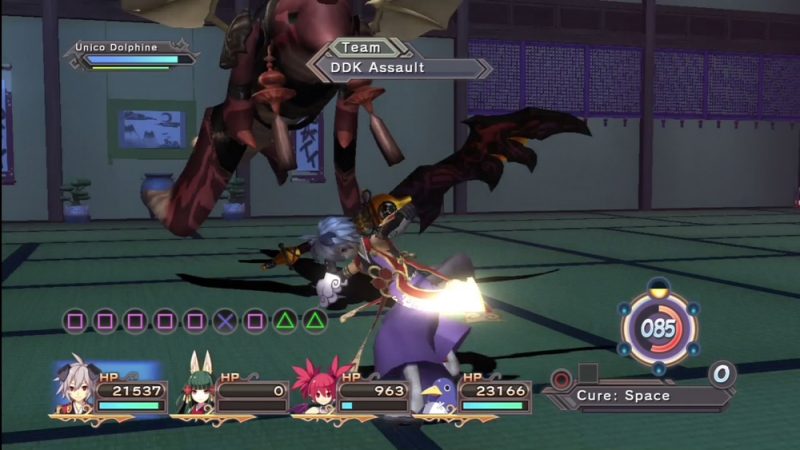
Presentation is again the biggest flaw for this latest NISA localized title, but it has some bright spots. Instead of having static drawings for the 'talking heads' sections, the developers introduced a system called Active Animation Adventure, where the characters will slowly move in an attempt to mimic how a normal person would look when standing still and breathing. The mouth of the drawing moves independently, which is great for easy lip synching, but doesn’t look quite right for the human characters (it looked perfect for the Prinnies though). I also feel that the focus on this system meant that the developers didn’t make many different types of faces for each character, so they don’t react or change much based on the conversation. Beyond those complaints, I was rather impressed by how the system looked and it helped give some life to the old 'talking heads' motif.
Once you get out into the dungeons and battle system the graphics take a steep turn for the worse. These developers are not well versed in three dimensional game making and it really shows. Dungeons are very repetitive and made up entirely of identical corridors and rooms. Character models are not very detailed at all. It looks better than I expected, but it’s still not nearly up to snuff with the norm for gaming this generation.
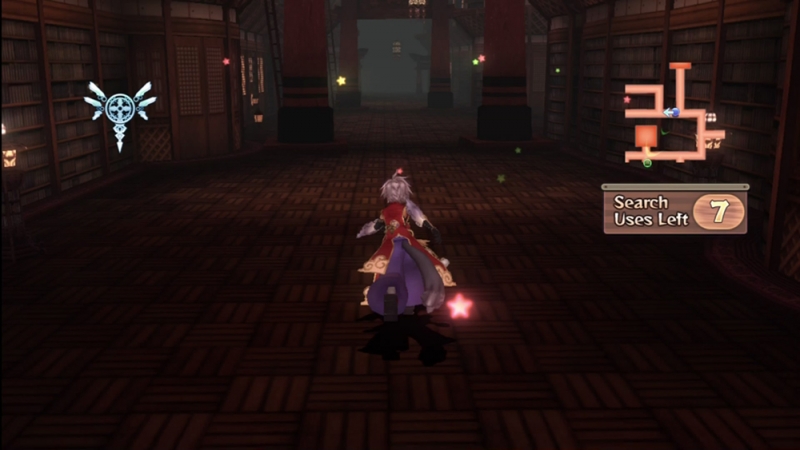
Music was mostly in the background, except for the menu music which flipped from being catchy to annoyingly upbeat and peppy depending on my mood. Voice acting has its ups and downs, with some characters coming off as ear wrenchingly annoying, like Pamela the ghost who always talks in a pseudo spooky voice, and others sounding great like Flonne and Etna. I do however wish that NISA would stop forcing Prinnies to say “dood” at the end of every flipping sentence. We get it guys, that’s their main character trait, but believe me we’ll still remember even if they go without saying it for 5 seconds. Just switch to every third or fourth sentence, I beg you... dood.
Kanata’s story took me 21.5 hours to complete with a good ending, which means I got all three side characters. Once you’re finished you can either continue in that world, getting stronger and stronger with no specific goal in mind other than trophies, or you can transfer over to the other story. When you switch to Rezelea’s story you can choose between two higher difficulties and whether or not you want to transfer over all of your items, so the playtime here can vary wildly. If you play through that story correctly you can work up to the true ending, which according to videos would require me to grind from level 70 to 180, so I decided against it. Needless to say, if you end up loving the battle system then there is a lot of grinding possible, but it doesn’t have the meaning behind it like a Disgaea where the story continues well into the 100s of hours of gameplay.
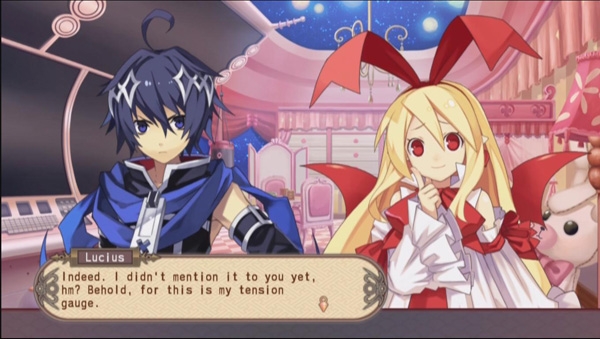
Someday I hope to play a cross over RPG that is actually good, but this isn’t quite it. While the presentation for the talking heads was interesting, the possible play time is massive, and the battle system is decently fun, I just can’t see this game as being even up to average standards because of the excessive and needless grinding, extremely poor 3D presentation, and lackluster story. Perhaps if they keep trying, NIS, Gust, and Idea Factory will finally get the formula right and make a beautiful and wonderful masterpiece, but personally I would suggest that they each just focus on their own IPs. If you’re a diehard JRPG fan in need of something to tie yourself over until Arc Rise Fantasia or Atelier Rorona are released, then I think you’ll get enough fun out of this to make it worthwhile, but anyone else can safely continue to be blissfully unaware of its existence.
VGChartz Verdict
6
Decent
























